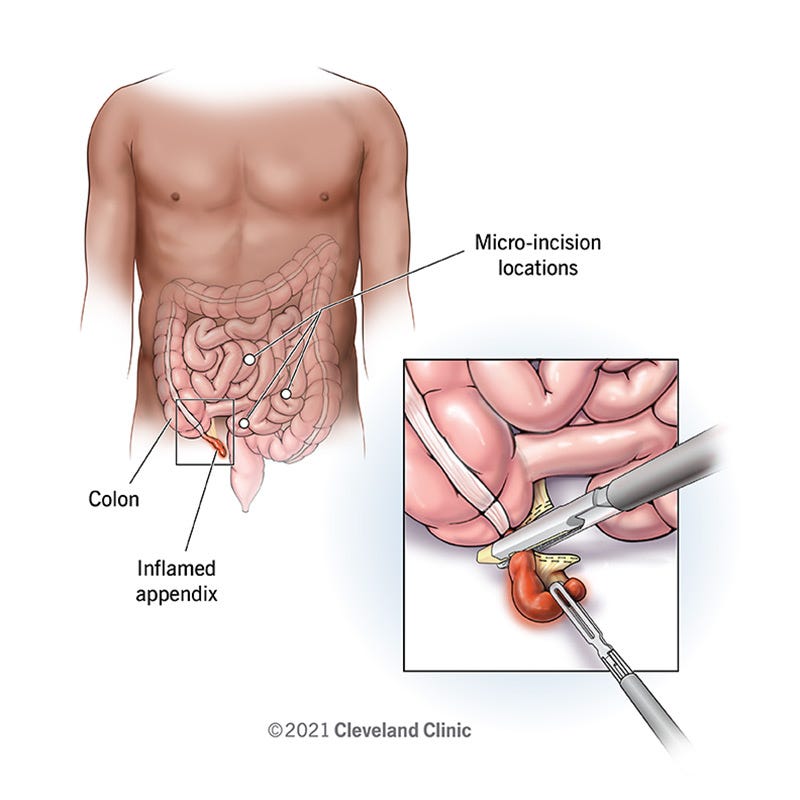Appendectomy
Written by Rhea Manjunath
An appendectomy is a standard surgical procedure to have the appendix taken out, most commonly due to appendicitis, which is the inflammation of the appendix. The surgery is required to prevent potential complications, such as a ruptured appendix. The surgery begins with a thorough preoperative workup, where the surgeon examines a patient's history and does necessary imaging tests, often an ultrasound or CT scan, to make the diagnosis. Once cleared for surgery, the patient is taken to the operating room. During an appendectomy, the patient is administered general anesthesia so that heor she is completely unconscious and free of pain.
Two major procedures of this operation are open appendectomy and laparoscopic appendectomy. A larger incision in the right lower abdomen is used in open appendectomy. On the other hand, in laparoscopic appendectomy, the doctorperforms multiple small cuts and inserts a camera and instruments through them to remove the appendix. This procedure is often minimally invasive and results in less postoperative pain and shorter recovery time. Once the appendix is removed, the doctor closes the cuts carefully with sutures or staples. The patient is then kept under observation in recovery. The majority of patients can return to normal activities in a matter of weeks, based on the procedure and personal health considerations. Keep in mind that early treatment is essential for an effective outcome.
Written by Rhea Manjunath from MEDILOQUY


